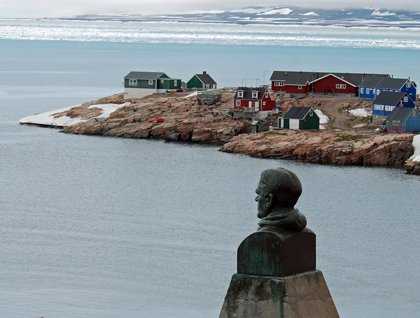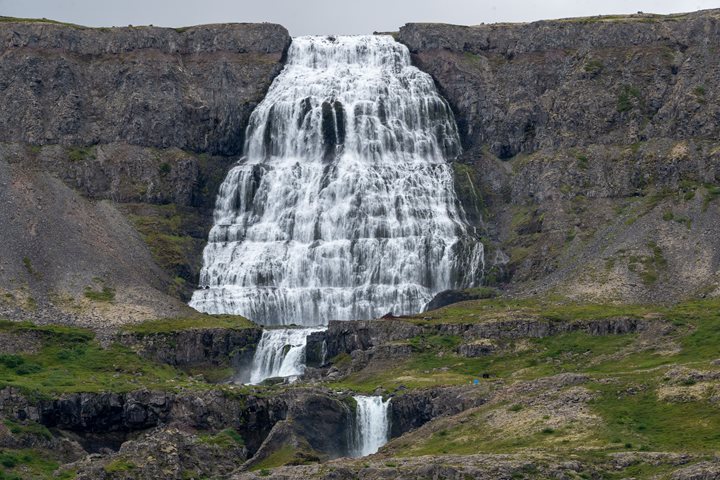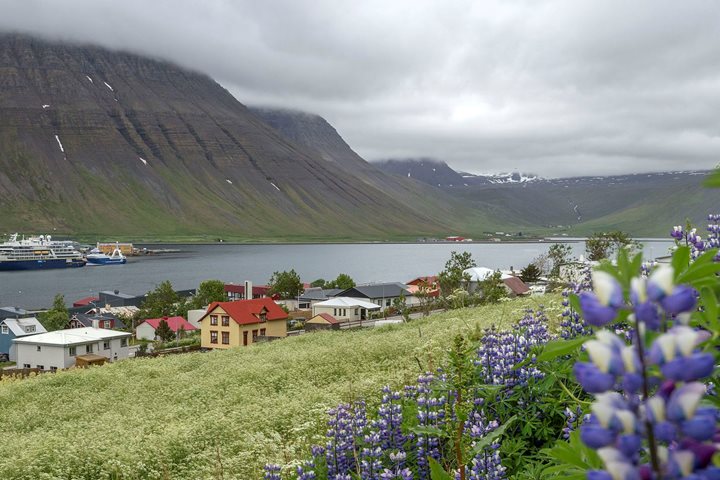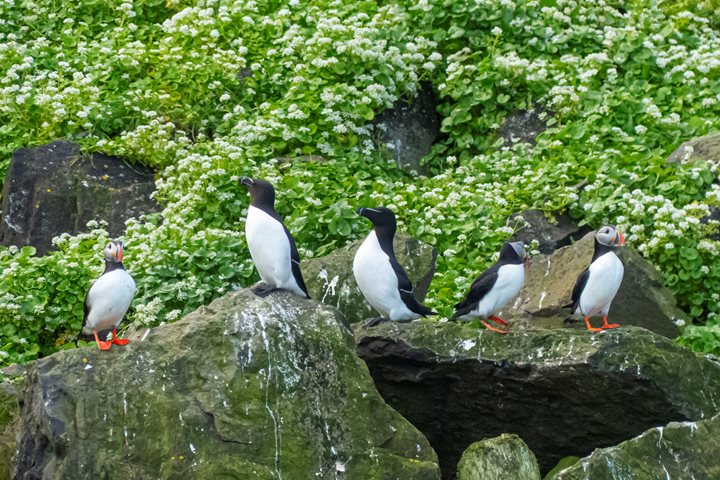Scoresbysund, in the local language called Kangertittivaq, is the largest fjord system in the world and is located along the desolate east coast of Greenland. Along the coast the multi-year pack-ice from the Arctic Ocean is pushed out into the North Atlantic, which makes this part of the Arctic very inaccessible for the most of the year. Also the fjord system with fast ice is affected by cooling from the ice cap, which makes the fast ice stay way into the later part of summer. Because of its inaccessibility, Scoresbysund was first seen and named in 1820 after the famous Whitby whaler, William Scoressby Jr., who was the first European ever to reach this part of eastern Greenland.
Scoresbysund, with all of its fjords penetrating far inland, is also a major area to capture the ice calving off from the east side of the Greenland ice cap. The wider, shallow outer part of the fjord has to be passed before icebergs can head out into the Greenland Sea and set sail south for Cape Farwell along the coast.
Operating in these conditions demands flexibility. The plan for the morning outing was to launch the Zodiac fleet for ice cruising but fog made it impossible. Instead the morning was filled with interesting presentations but right before lunch, close to a huge iceberg, the fog partly lifted. We were able to see the high mountain peaks surrounding the outer part of the fjord and also a distant polar bear on the broken sea ice. Unfortunately the bear disappeared into a fog bank.
After lunch we ventured into the only settlement, Ittoqqoortormiit (previous named Scoresby Sund) along north eastern coast of Greenland, and one of the most isolated villages in the world. Through the year it is usually only during the ice free months, August or September, that one supply ship per year arrives.
The indigenous Inuits on the east coast to Greenland were only encountered once, by a British expedition in 1822. How and why they disappeared is not known but plenty of remains from their settlements and hunting activities can be found.
The village we visited was in fact established as late as in 1925, as the Danish government was afraid the Norwegian trappers would take control of this part of Greenland. The famous Danish polar explorer Ejnar Mikkelsen was the man behind the establishment and moved Greenlanders from the western side to the east. Today his statue can be viewed looking out over the village and the fjord. For anyone acquainted with Antarctic Peninsula exploration, here is also found a monument to the famous French explorer Charcot. He spent several summers exploring Scoresbysund after WWI with his ship Pourquoi-Pas?
In this hunting village we visited the little museum and were greeted by a local girl dressed up in local costume. At the tourist office we had opportunities to buy local handicrafts, including wool from Muskoxen. Outside we were able to taste the meat. Barking Eskimo dogs and rapidly ‘flying’ ATVs, set the atmosphere. The trappers were now preparing for the narwhale hunt as the first pod had been seen for the season.
As we walked around the village, based still on hunting, hides from seals and polar bears were hanging to dry. The set quota for polar bears on eastern Greenland is 50, mainly hunted from February to late April.
More surprisingly we also found Anders, the local game warden for the area, skinning a large newly shot polar bear. It had been approaching the village for some time and they had tried to scare it off. The day before our arrival it was decided by the local government to shoot it.
Many of us gathered to get a closer look on this polar bear and hear Anders’s stories. Thanks to our Danish National Geographic photographer, Sisse Brimberg, we had an excellent translator. Anders had through his life been part of the famous Sirus patrol, which patrols the area from Scoresbysund to the very north of Greenland along the sea ice. They still use dog sledges. This patrol was established during WWII to search for German weather stations. After the war the Sirus ice patrol was re-established to maintain a watching eye over the enormous uninhabited land.
Back onboard we set sail southeast and right after dinner the captain found some great icebergs grounded on the shoal off Cape Brewster. Additionally, it was clear blue sky and finally the ‘morning ice cruise’ became an ‘after dinner ice cruise.’ Besides seeing the magnificent icebergs we also got a closer view of the basalt cliffs covered with breeding seabirds.
Flexibility is the key as you travel in the area of the midnight sun. You search for opportunities and never let them go. Soon onboard our heading was set for northwest Iceland and we were again imbedded in thick fog and maybe contemplating how different the world can be, depending on where you are born and live. For sure, our short visit to Scoresbysund and meeting the people in Ittoqqoortormiit made a lasting impression.







